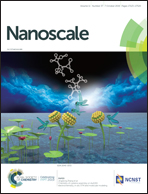Coordination polymer derived general synthesis of multi-shelled hollow metal oxides for lithium-ion batteries†
Abstract
Multi-shelled hollow metal oxide nanostructures have attracted tremendous attention in energy storage devices owing to their high specific capacity, rate capability and ameliorated cycling performance. Although great progress has been made in synthesizing multi-shelled hollow structures, most methods still depend on tedious template mediated strategies to generate complex interior structures. Herein, we developed a facile universal self-templated approach to synthesize a series of multi-shelled hollow metal oxide spheres with tailored compositions. This strategy involved the solvothermal preparation of uniform spherical coordination polymers (CPs) as precursors and a subsequent thermal treatment in air. Single-, binary- and ternary-metal multi-shelled hollow oxide spheres (Co, Mn–Co, Ni–Co, Ni–Co–Mn, etc.) were successfully obtained. To demonstrate their applications in energy storage, the electrochemical properties of ZnCo2O4 were investigated by testing the lithium-ion-storage performance. Owing to the unique structures, the multi-shelled hollow ZnCo2O4 spheres exhibited high specific capacity, excellent cycling durability (1200 mA h·g−1 after 200 cycles at 0.1 A g−1) and prominent rate capability (730 mA h·g−1 at 5.0 A g−1).



 Please wait while we load your content...
Please wait while we load your content...